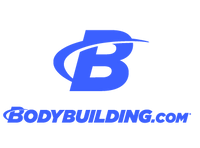Learn to find your 1RM safely and effectively to unlock the rewards of maxing out—injury-free.
Master Coach Craig Bongelli
January 2, 2025
Maxing out regularly is often seen as a beginner mistake or the path the overly excited take directly to an injury. While these can be true, done correctly, maxing out can fuel faster progress and provide you a much more effective program.
Here’s everything you need to know about maxing out to get all of the benefits, without the risks.
First, we need to make sure we know what we’re talking about. The expression “maxing out” is the gym bro way to refer to testing a one-rep max. Your one-rep max (or 1RM) is exactly what it sounds like: the maximum amount of weight you can handle for a single lift on a given exercise.
Often, people max out haphazardly. They choose random lifts, make crazy jumps in weight, and arbitrarily try to hit whatever number they happen to have in their heads that day. While this might be entertaining for anyone watching at the gym, this is clearly not an effective way to program your training and comes with some obvious risks in terms of injuries.
To effectively max out and find your 1RM, here are a few steps you want to follow:
1. Choose the Right Lift(s)
Maxing out is physically, mentally, and neurologically stressful. This isn’t a bad thing, but it’s important to understand that testing a maximal lift comes with a cost. Because of this, you should only be maxing out on lifts where you have a reason to do so. Getting into a “curl-off” with a gym buddy might sound fun but it won’t provide any value to your progress going forward, and if you tear a bicep for nothing you’re not going to be a very happy lifter.
2. Build Up Slowly
You want to systematically add weight each set, while keeping your reps low. This will be illustrated in an example below but the key is to allow your body to warm up, allow your nervous system to begin firing at 100% and to conserve as much energy as possible for your heaviest weights.
3. Don’t Chase Numbers
It’s impossible to avoid having a certain number in your head for what you’d like to hit when you max out. Having an ideal goal or target is fine, but you can’t allow that to take over. If your form is breaking down, or you barely hit your last lift, you need to call it and live to fight another day. If your max isn’t what you hoped for, you can train and improve it. Sacrificing your form or getting hurt just to hit a certain number has never helped anyone.
Here’s how this could look if you were testing your deadlift, with a goal of pulling 400 pounds:
- 95 x 5
- 135 x 3
- 185 x 3
- 225 x 1
- 275 x 1
- 315 x 1
- 355 x 1
- 385 x 1 (this would be an essential form check weight)*
- *At this point, if 385 moved slowly, you might consider just a 10lb jump to 395. If it moved really well, you could jump to 405. We’ll go with the second option for this example.
- 405 x 1 (And you felt like you had more in the tank.)
- 415 x 1 (Back started rounding a little more than you’re comfortable with, so even if you thought you had 425 if you gave it your all, this is where you would stop.)
Now that we have your 1RM (and a new personal best)—congratulations! So, what can we do with it?
First, we can see if you’ve gotten stronger. If this is one of your goals, it’s going to give you immediate feedback on whether or not your program is working and if you’re moving in the right direction.
Another major benefit of knowing your 1RM is that heavy weights allow us to see which positions, or muscle groups, break down first. In the deadlift, you might find that the top half of the lift is the hardest for you. This would indicate that to continue making progress you need to focus on your glutes and upper back. Conversely, if getting the bar off the floor is the limiting factor, you would focus on extra quad and ab work.
This “investigation” and reflection is not common for most lifters but is one of the most powerful lessons you can learn from maxing out and can rapidly improve your progress.
Finally, the last major benefit to knowing your 1RM is being able to correctly select weights for your goals. With the deadlift as our example, if you want to increase explosive power, the optimal approach is 8 to 10 sets or 1-2 reps with 65-75% of your 1RM. Maxing out on the deadlift allows you to take the guesswork out of selecting your weights and to know exactly what you need to focus on: explosive power, strength endurance, or any other performance goal.
Now that you know how to max out properly, and what you can learn from it, don’t shy away from a periodic heavy day. And definitely don’t forget to use what you learn to push the gas as you chase your goals!

